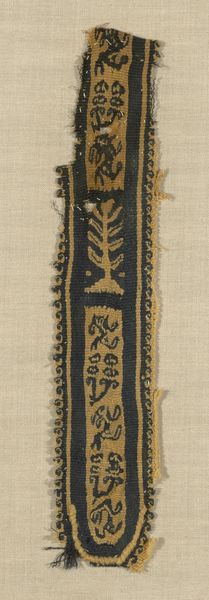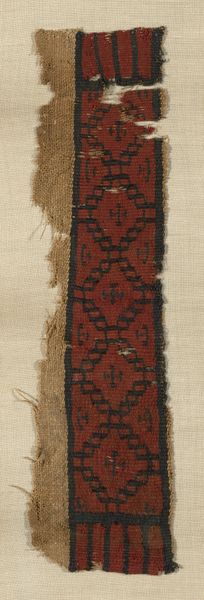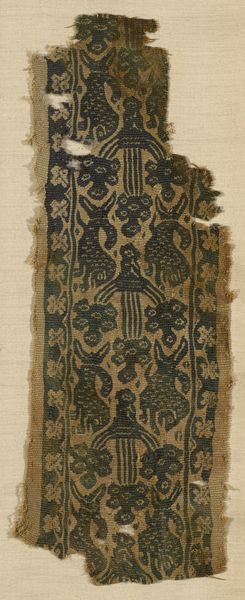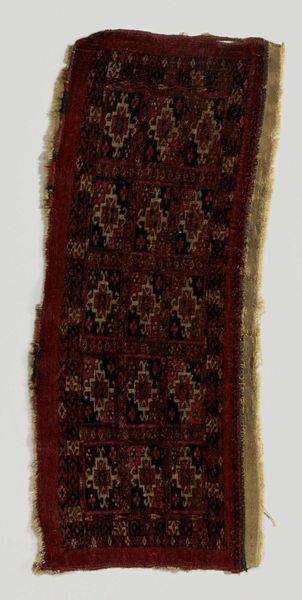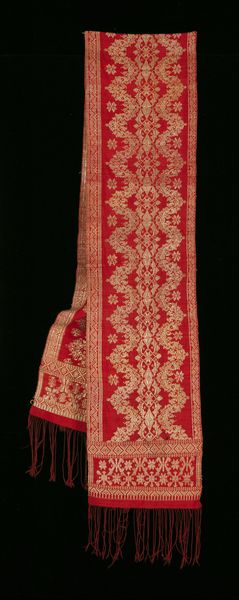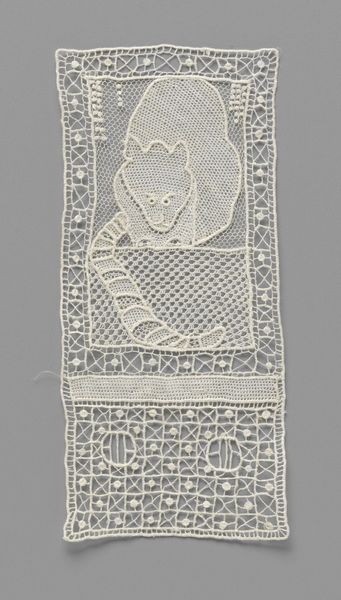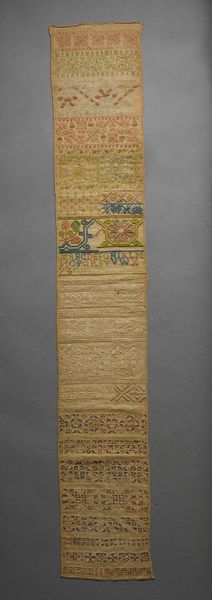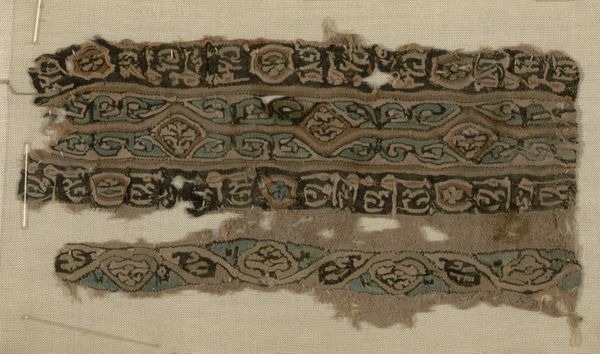
Border (from a Tunic) Roman period (30 B.C.– 641 A.D.), 4th century
0:00
0:00
weaving, textile, wool
#
weaving
#
textile
#
ancient-egyptian-art
#
wool
#
ancient-mediterranean
#
line
Dimensions: 13.3 × 2.5 cm (5 1/4 × 1 in.)
Copyright: Public Domain
This is a fragment of a tunic border, made by a Coptic weaver in Egypt, likely many centuries ago. It’s made of wool and linen, using a tapestry weave. The dark wool creates a striking pattern against the lighter linen ground, a vertical axis with stylized floral or vegetal forms. The process of tapestry weaving, building the image directly into the structure of the cloth, requires intense focus and patience. The weaver would have built up the design thread by thread, a slow, deliberate process. This textile offers a glimpse into the social context of its creation. Coptic textiles like this one were widely produced, indicating a well-established weaving industry. The materials themselves – wool and linen – speak to agricultural practices and trade networks. The level of skill involved suggests specialized labor. By considering the materials, the making, and the cultural context, we can move beyond simply seeing an abstract pattern and appreciate the rich history embedded in this small fragment.
Comments
No comments
Be the first to comment and join the conversation on the ultimate creative platform.
